Episode 195
What you’ll learn in this episode:
- Why Charon cares more about quality of content than whether something is defined as art, jewelry or craft
- Why social pressures can make it difficult for people, especially men, to wear art jewelry, and how education can change that
- Why so many people choose to spend money on traditional jewelry, even if they are intrigued by an art jewelry piece
- Why Charon believes every artist has a uniqueness that can be developed
- How the relationship between artist and gallery is changing
About Charon Kransen
Charon Kransen established Charon Kransen Arts in New York City in 1993, in order to promote exciting jewelry from around the world in North America. The work is presented annually at various American art fairs, such as SOFA New York, SOFA Chicago, SOFA Santa Fe and Art Palm Beach and the Int. Art and Design Fair in New York and at select galleries specializing in contemporary crafts and design.
As a private dealer, Charon Kransen Arts welcomes individuals, collectors and museums to the Upper West Side of Manhattan.
The collection consists of jewelry, hollowware and accessories by both renowned and emerging artists, whose work may be found in museum and private collections around the world.
The focus is on the artists’ personal vision and on an innovative approach, characterized by the use of a wide spectrum of materials from paper to precious.
The educational branch of Charon Kransen Arts includes lectures and seminars throughout the USA, Europe, Australia and South America and the distribution of books and exhibition catalogs on all aspects of jewelry, metal and design
Additional Resources:
- Website: www.charonkransenarts.com
Photos:
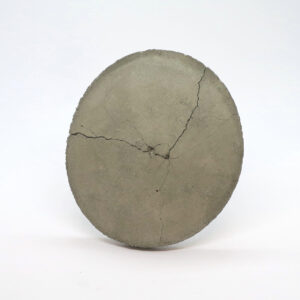
brooch Tamara Marbi Joka Norway, winner Herbert Hofmann Prize 2023
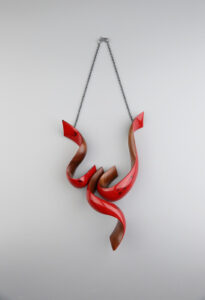
Image 1- Necklace Joo Hyung Park S. Korea
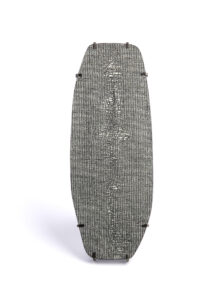
brooch Roberta Consalvo Sances Italy
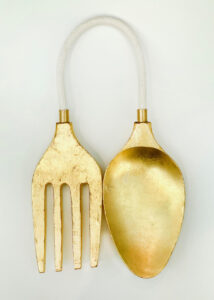
Necklace Hungry Elin Flognman Sweden
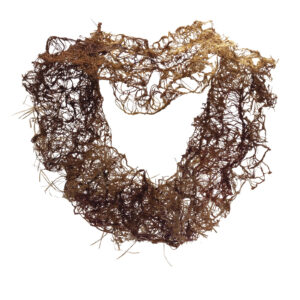
Necklace Wetlands, Mabel Pena Argentina, finalist Loewe Foundation Craft Prize 2023
Transcript:
It takes a certain type of person to appreciate art jewelry, and it’s even rarer for someone to wear it unabashedly. Charon Kransen proudly considers himself the latter. As the founder of Charon Kransen Arts, he is a gallerist and educator who hopes that more people embrace and express their differences through jewelry. He joined the Jewelry Journey Podcast to talk about the challenges that galleries are facing today; why people wrongly assume that traditional jewelry is a better investment; and how education can help people find the confidence to wear art jewelry. Read the episode transcript here.
Sharon: Hello, everyone. Welcome to The Jewelry Journey Podcast. This is the first part of a two-part episode. Please make sure you subscribe so you can hear part two as soon as it’s released later this week.
My guest today is Charon Kransen. Even if you think you don’t know him, you’ve probably already bumped into him. He was familiar to me years before I met him. I asked a lot of people, “Do you know Charon?” and they would show me what they had bought from him. He’s truly a man of the art jewelry world. He studied in several countries and speaks several languages, and he teaches and lectures about art jewelry globally. There are few book fairs where he is not present with his books and jewelry. He talks to those making art jewelry everywhere. If you’re on his mailing list, he keeps well-apprised of the new things coming out.
He was one of the first guests we had on the podcast. We called that episode “Having the Confidence to Create and Wear Contemporary Jewelry.” I read that title and thought, “That says a lot.” I’m looking forward to hearing about the ups and downs of the intervening years. I know some of them have been very, very hard and some of them have been O.K. Charon, thank you for coming back for round two of the podcast.
Charon: Glad to be here.
Sharon: First, is there a difference between art jewelry and contemporary jewelry in your mind?
Charon: I’ve always tried to avoid the term art jewelry. It’s a very strange term. When you talk about contemporary jewelry, the definitions that people understand are so varied. People call modern jewelry contemporary jewelry or studio jewelry. As a matter of fact, I’m not really interested in what to call it. It feels like a very contrived term.
Two weeks ago or so, I was invited to the preview and award ceremony of the Loewe Craft Competition, which showed the work of 30 finalists. Three of the artists I represent were included in that show. Anyway, the big winner was Eriko Inazaki from Japan. She was Japanese, totally overwhelmed when that was announced, and with the help of a translator, she had to improvise and say something. You can Google the winner. It is just an incredible piece. It’s a porcelain object. But the way she talked about it was, “I don’t really care how you call it, whether it’s art or whether it’s craft,” and I totally related to it.
For many years, when people asked me those kinds of questions, like, “What is it, craft or art?” I don’t think that way. All I can say is all these people have graduated from an art academy somewhere in the world. They’re trained as artists, and the best way to describe how art jewelry is different from commercial jewelry, estate jewelry, fashion jewelry, you name it, is these are artists who have chosen the medium of jewelry to express what any artist wants to express in his or her medium. So, when I think about the word “art jewelry,” it is about something. It is content based. There is a story to it. I’m not talking about a literal story, but it has something to do with—I’m using my own invented words or description when I talk about art jewelry. There is something about the quality of content and learning to see that.
In the 54 years I’ve been in this field, I’ve obviously seen a lot of jewelry. There is room for every option in the jewelry field, but the more I see—and there’s a lot that I see—I’m just not interested. What I’m more and more interested in is, “I don’t know what I’m looking at, but there is a quality of content.” It’s mysterious. It’s not literal, and it brings up a lot of questions. It’s not about elegance, necessarily; it’s not about beauty; it’s maybe about a different definition of beauty, but it’s very content based. You know what I’m saying? You walk past things that are beautifully made, but what is it about, and what do I get to receive from the artist’s mind?
Sharon: Would you say that is what attracts you to art jewelry? You’re saying, “What do I see? What do I understand from the piece? I don’t know what the piece is.”
Charon: I would say that is what touches me. Of course, one can be touched in many different ways. When you go to the Hermitage in St. Petersburg and go to the treasure room, you see the most incredible jewelry and objects made with craftsmanship that is just amazing. I can appreciate it for that reason, but does it touch me personally? No, not really. At this point of life, all that matters to me is that I want to be engaged with it; I want it to bring up questions. That’s where I am right now.
Sharon: That’s interesting. As you were talking, I thought that while contemporary jewelry is fashion, it’s commercial, it’s not the kind of thing that would attract you, I would guess. I think all of that is pretty or I might want it, but I do have questions. What does it mean, what did the artist want to say, that sort of thing.
Charon: Right. What does it do to me? What does it trigger in me, and which part of whoever I am does it resonate with? I want that connection.
Sharon: Do you think that’s how you grow the field? By educating people, the makers and the buyers, that there is a connection?
Charon: After I graduated in 1975 in Germany, I went back to Holland. This was a time where things were just starting to happen in terms of a different kind of jewelry we didn’t have a name for. I’m talking about the environment. There were no galleries; there were no museums that collected jewelry; there were hardly any publications. There was nothing, really. So, you can then say, “Well, if we want to make a living at some point, we need to educate the public. We can’t just put it out and say, ‘O.K., you people have to understand it and appreciate it and put money towards it.’ No, this is all about education.” I’m probably more of an educator than anything else because the things I do constantly require education, because we’re talking about work that is more or less foreign to most people. Most people want and wear what already exists, right?
Sharon: Right.
Charon: That is their comfort level; that’s their comfort zone. Who am I to say that’s wrong? No, it’s not wrong. But in order to find the connection to this different kind of work, let’s call it, it requires education and, I would almost say, emotional and psychological education. Am I going to wear something so people will look at me like, “Where are you from? What planet are you from?” because they have no reference whatsoever? Am I able to withstand that? Am I able to ignore that and say, “Hey, this is what I want to wear”? It involves a lot of things that certainly have an emotional and psychological component. Do I have enough courage? Do I need to be seen? No, I don’t need to be seen, but this expresses something in a nonverbal way about who I am, and thank God there is this. Do you know what I mean?
Sharon: Yes.
Charon: It’s essential. It still is in many ways because we’re a relatively small field compared to the global, bigger jewelry fields. That’s just the reality of this separate option in the bigger jewelry field. It’s complicated. It’s challenging. I’ve always known that. This is not going to be a big market. If you compare it with the market for estate jewelry, for high-end jewelry, for commercial jewelry, it’s tiny.
Sharon: Why did you choose it? The things I’ve seen you wear are different. Is it because they are expressing who you are? I’ve mainly seen you wear brooches at fairs and things.
Charon: It expresses who I am. It expresses my mood, and that can change from one day to the other, obviously. It can feel like protection. That’s how I wear jewelry. Of course, sitting here, I’m not wearing jewelry. I’m not always wearing jewelry by any means, but yes, it does speak a language I use because I want the world to know this part of me.
Sharon: Do people come up to you—women especially—and say, “Gee, I wish my husband had the courage to wear a brooch or something besides cufflinks. Do you think my husband could do that?”
Charon: That’s an interesting question. It’s not just women who talk about their husbands. It’s also women who say, “You can wear it because—” fill in the blank. “You’re tall. You have a long neck. You have the right personality,” etc. It’s always something in comparison. When I hear something like this, I always think this is just a way to say, “I’m not really interested.” Fine, but to always put it on the other, like, “You can do it. You can wear it. You can get away with it. You, you, you, not me.” Well, why not me? Why not? And that, of course, brings up a lot of questions.
I don’t have issues wearing jewelry; I don’t care what people say, but we live in a pretty traditional society. I have certain couple clients where the husband has slowly ventured out to wearing small lapel pins, and he’s becoming a little more courageous under the constant education of the wife. But let’s face it: most men do not wear it. They’re afraid of color. They won’t wear anything that draws attention, because God forbid what that would do. That would open up a discussion that a lot of people just don’t want to have.
Sharon: What do you think the difference is? Karen Rotenberg from Gallery Loupe talks about how women come in and say, “Oh, I could never wear that,” and then they leave wearing something that’s contemporary or really out there or something they thought they couldn’t wear. Why does that happen?
Charon: In the past few months, I’ve had some rotator cuff problems. I’m going to PT two to three times a week, and there are two physical therapists, both men, and me being me, I comment on the fact that the colors they are wearing are so boring. It’s almost as if I’m back in the 50s in Holland, in a Calvinist country where we wouldn’t see colors. It was gray, beige, dark blue, black, basically. My apartment is full of color. I wear a lot of color. So, we talk about it sort of jokingly, and it’s like, “Oh no, you can’t do that. That is not very manly to wear color.” I’ve been going there now for a few months. Last week—and I kind of tease them also—one of them said, “You know what? I bought four very colored T-shirts.” That is education, but in a light way.
I think there are all kinds of traditional attitudes attached to it. God knows what they are. “Men don’t wear color.” Well, look in nature. I lived for a year in Lapland. If you see how the men dress in Lapland, their whole chest is full of jewelry. There are so many different cultures where men wear jewelry. Look in nature. So, what have we done to the man?
Sharon: That’s a good point. Most physical therapists who are male wear dark colors, whereas the women might wear peach scrubs or something like that.
Charon: Why is that? Is it that you’re afraid to show who you are? What is that all about?
Sharon: That’s a good question. People think that’s male.
Charon: Right. Adornment belongs to women, or whatever is in your mind. I think all these people miss out on a lot of pleasure, a lot of leaving your comfort zone. Yeah, it might be a little scary, but in the end, it’s great, especially when you hear comments from people. A lot of it is fear-based, I think. What will other people think?
Sharon: You must get a lot of comments on a piece of jewelry, a brooch or something. It opens the door.
Charon: It does. At the opening of the Loewe preview, I wore a big brooch and saw people looking. There were very few people who actually commented on it. I think it was just too awkward for most people. Can you believe it in the New York crowd? I think it brings up a certain confusion. They see a man wearing something very colorful, a brooch or whatever. Maybe that’s the confusion. They don’t know how to approach it. They don’t know how to respond to it, instead of saying, “Wow, that looks great. I don’t know what I’m looking at, but it looks great, and it has great energy.” You know what I mean?
Sharon: Yes. Like you said in the title of the last time you were on, you have to have confidence to create it and to wear this kind of jewelry. You have to be confident in yourself. There must be a piece of yourself that’s confident about it.
Charon: It doesn’t just apply to jewelry. It applies to anything in life. How do you want to be in life? Who do you want to be? How do you want to dress? How do you want to develop friendships? It’s anything. There’s a lot of talk about how we can develop younger collectors. I’m generalizing of course, but the problem with younger collectors is that they haven’t really grown into their own. There are a lot of things that will guide them towards Cartier or Tiffany because that’s recognizable, and that tells the viewer, “I belong to a certain status; I wear Tiffany or I drive a Mercedes.”
I think it comes with age that at a certain point, you look back and say, “Now, who’s going to determine what I do, what I say, what I wear, what I eat? Is there somebody like me who says, ‘It makes me feel a certain way, and that is why I’m doing it this way. That’s why I’m wearing it’?” There are so many phases in life where you’re preoccupied with all these questions. You look at adolescents and teenagers, and thank God I’m not in that phase anymore, because it’s so much about blending in and being like the group. You’re talking to somebody who has, in many ways, always has been an outsider, so maybe you need to embrace that in yourself, whatever way you are different than other people.
Sharon: That’s interesting. I’ve never heard anybody talk about the issues of having collectors be younger or nurturing them. I’ve never heard anybody explain it that way, in that you have to grow into it in a sense.
Charon: Right, it’s being different or an outsider. Maybe this is way too philosophical, but I think we spend a lot of time coming to terms with that and viewing it as, “What’s wrong with me?” versus saying, “I embrace the difference in me. I embrace it. I don’t judge it. It’s not a negative thing. On the contrary, it’s inspiring, and this is how I want to live.” I think time and experience help you get to that point, and then you can start living your life and wear whatever you want. In Western Europe, we call it Calvinism. In Scandinavia, you call it Janteloven, but it all comes down to, “Don’t think you’re anybody special. Try to blend in as much as possible. Don’t draw attention to yourself.” Well, if you want to live that way, be my guest.
Sharon: That’s not my image of New York, blending in, but I suppose. We will have photos posted on the website. Please head to The JewelryJourney.com to check them out.

